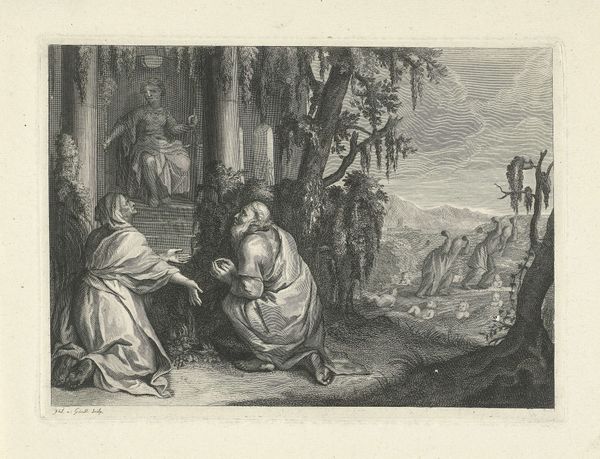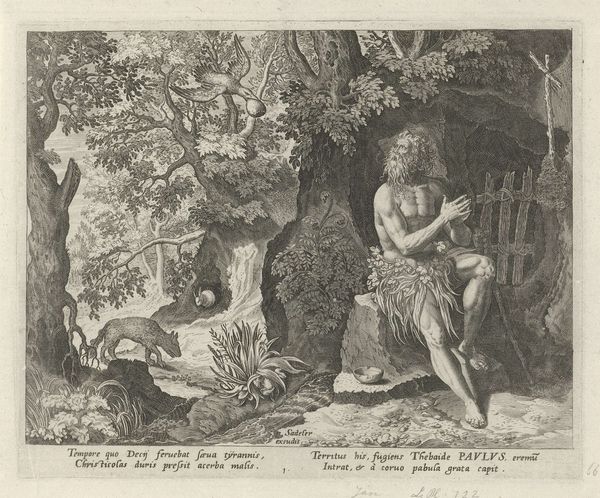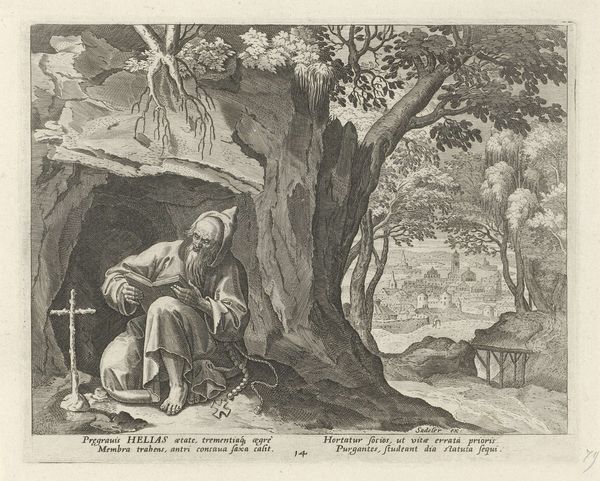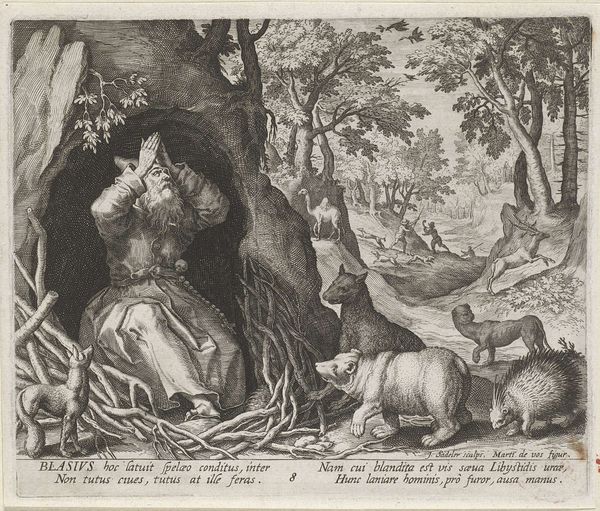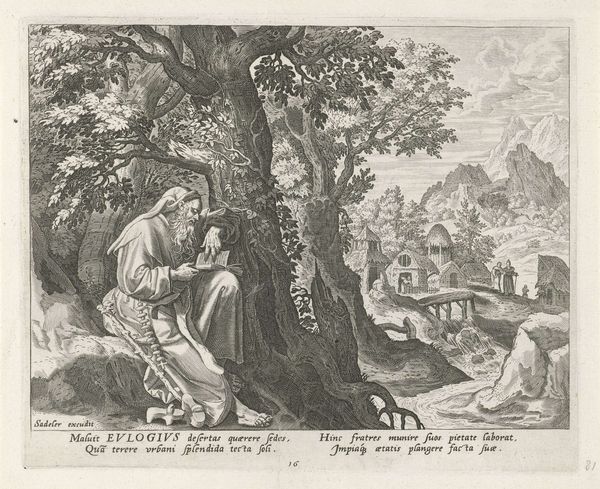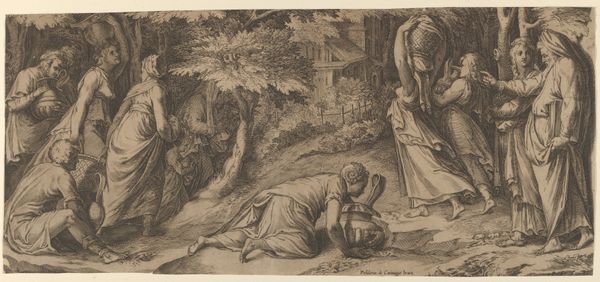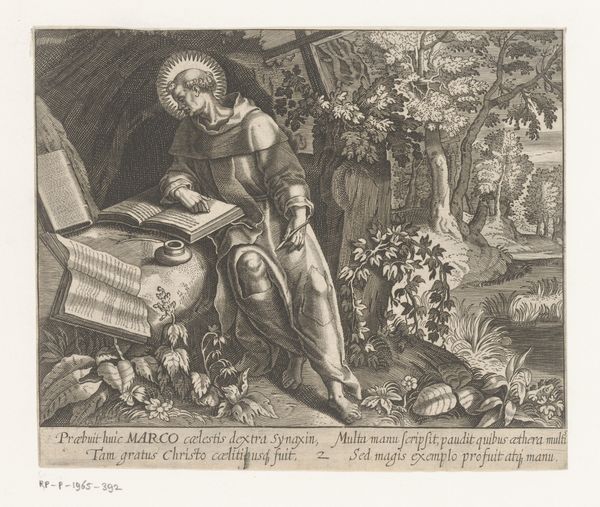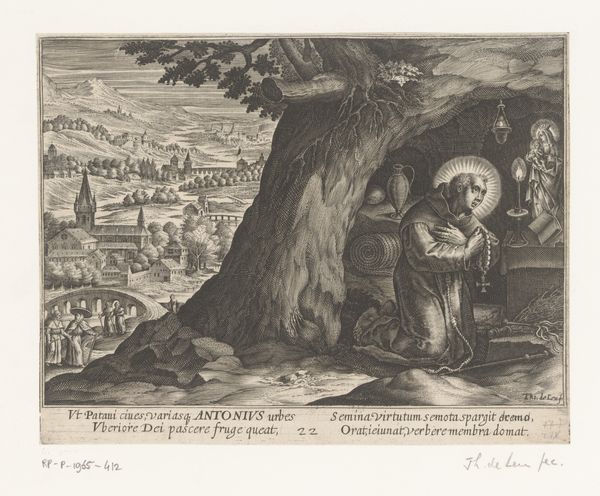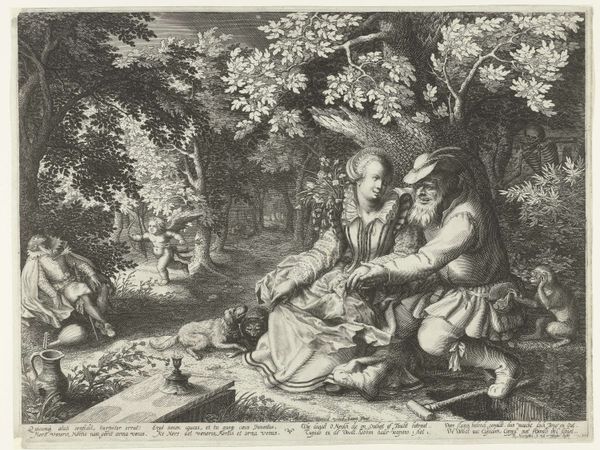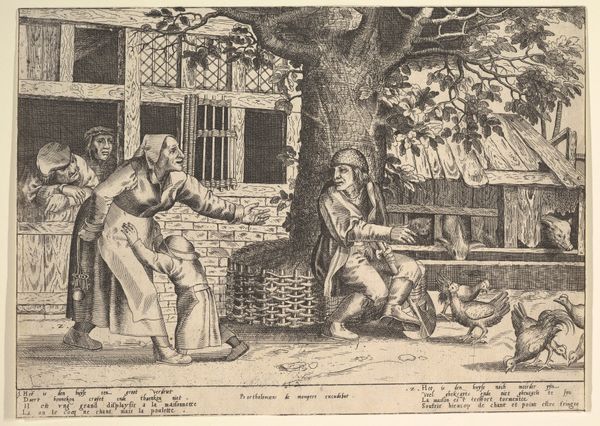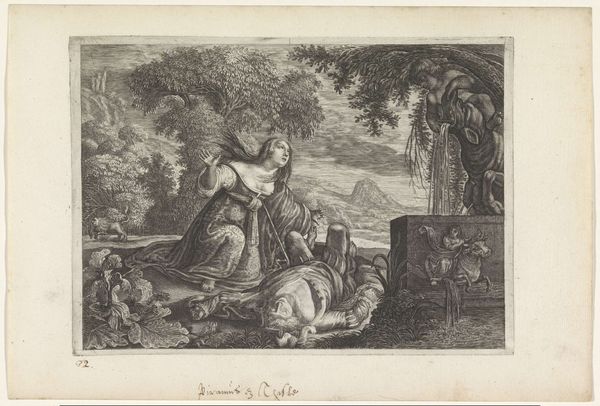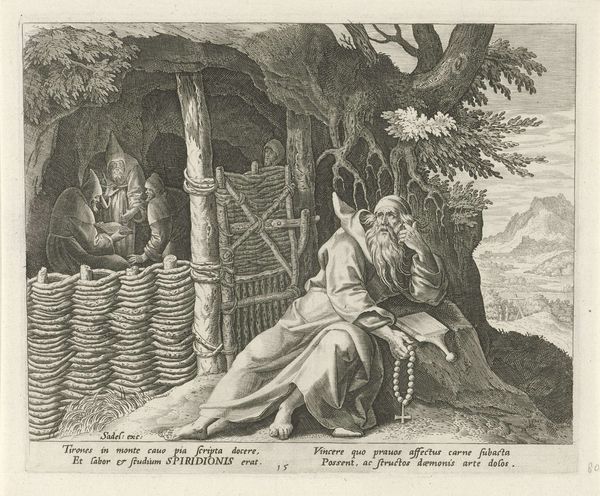
Dimensions: height 170 mm, width 214 mm
Copyright: Rijks Museum: Open Domain
Editor: Here we have Johann Sadeler’s "Or de kluizenaar," made between 1586 and 1588. It's an engraving currently held at the Rijksmuseum. There's an undeniable somber mood evoked by the monochrome palette and the stark depiction of the hermit's solitary existence. How do we unpack the layers of meaning embedded in the materials and production of this print? Curator: Consider how the engraving medium itself—a reproducible form—democratizes this image of asceticism. Sadeler wasn’t just depicting a scene; he was producing multiples for a market, tapping into a contemporary interest in religious devotion and solitary labor. Look at the detail etched into the depiction of the hermit's simple tools: the barrel, the pitcher. How do these mundane objects, carefully rendered through labor-intensive techniques, complicate the notion of "high art"? Editor: That’s a compelling point. The level of detail does seem at odds with the presumed simplicity of the hermit’s life. Does the print elevate his status? Curator: Perhaps, but let’s also consider the economy of printmaking. Who was buying these images, and what value did they place on scenes of piety produced through artisanal labor? Were they symbols of wealth, readily available indulgences, accessible even to common people, as opposed to unique paintings owned by aristocrats? The production and distribution of this print is key to understanding its cultural impact. Editor: So, it is not just about what the print shows, but also how and for whom it was made. I will need to consider this angle from now on. Curator: Precisely. Materiality and access aren’t neutral. They are imbued with social and economic significance that shape our interpretation.
Comments
No comments
Be the first to comment and join the conversation on the ultimate creative platform.
